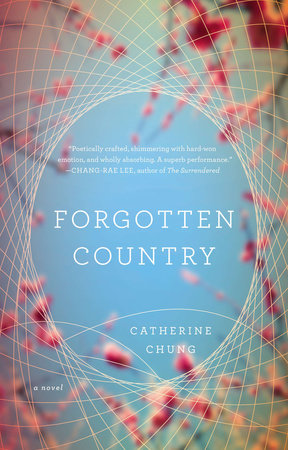This week’s novel was Forgotten Country by Catherine Chung, centering around a Korean-American family in the midst of a familial crisis: the youngest daughter, Haejin (Hannah) has disappeared without a trace, and it is up to Jeehyun (Janie) to find her before it is too late.
The novel had a lot of different themes and symbols, almost too many to list, so I’m going to stick to some of the main ideas I found throughout the novel. The first is the theme of resentment — between Janie and Hannah, between their mother and father, between their father and his sister, so on and so forth. There were many criss-crossing relationships that were built on a lack of communication and abundance of resentful silence that allowed for hatred and disappointment to grow and fester. Janie and Hannah had a tough relationship, not unlike most sisters, but theirs focused more so on the lack of communication than anything else. They lost touch with each other and allowed for the distance between them to grow until Hannah finally disappears because the pressure to keep up the silence is too great.
Each of the sister’s faces her own hardships throughout their childhood from molestation, to racism, to jealousy. Like many siblings, it seemed that Hannah and Janie were in a constant battle of who was the better sister, always believing the other to be something they were not. Janie always blamed Hannah for being too emotional, too extroverted, too attention seeking. Hannah saw Janie as too conformist, too similar to their parents. The sister’s let their assumptions grow until neither of them could connect with each other anymore.
One of the largest forms of resentment was from Hannah towards Janie, when Hannah finally admitted to Janie what Gabe had done to her as a child. There is a strong parallel between Hannah’s molestation and the case of her coworker’s baby dying. Her coworker had left her two children at home, one a young boy of 12 or so to watch over his baby brother. Some neighbor kids broke into the house and began physically bullying the older brother while they took the baby and dangled him from the 12th story window — and dropped him. The older brother ran outside, arms outstretched hoping to catch his brother before he hit the ground not realizing the finality and literal gravity of falling from such a height. In that story, Hannah clearly saw herself as the baby while Janie is meant to be the older sibling, watching over her. Hannah blames Janie in part for what happened to her because she was not there to protect her little sister from their horrible cousins and then told her to be quiet about it. Hannah then saw her favorite baby doll, aptly named Baby, as a physical reminder of what happened to her and promptly got rid of the doll.
Once this part of the story came to light for me, I was shocked to see the obvious parallels between the stories and layers of writing that took to get there. Janie had always felt like the responsible sister, the one who took care of everyone and everything while Hannah went off and did her own thing; Janie never was able to figure out why Hannah was so rebellious until it was too late and their connection was nearly lost. But towards the end of the novel, on page 282, Janie finally lets Hannah clean up the mess their mother made and allows her to be there for their family when she hadn’t in the past because her grief blocked her from it.
The lack of communication throughout the story was frustrating to read about; Janie never admitted to her sister that she, too, was abused and had distanced herself from the family because of it even though that would have allowed for her to connect with Hannah in a way they hadn’t connected in years. This novel really showed the importance of communication and how silence can be deadly in a family who is meant to be so much closer.
The story also touched on a lot of other very important topics like the familial patriarchy that is so common to so many families, and the fetishization of Asian women which leads to sexism and misogyny. These were all really important and obvious themes throughout the story that I have detailed in my book annotations and I won’t be writing out here. Just wanted to point out the other important issues.
